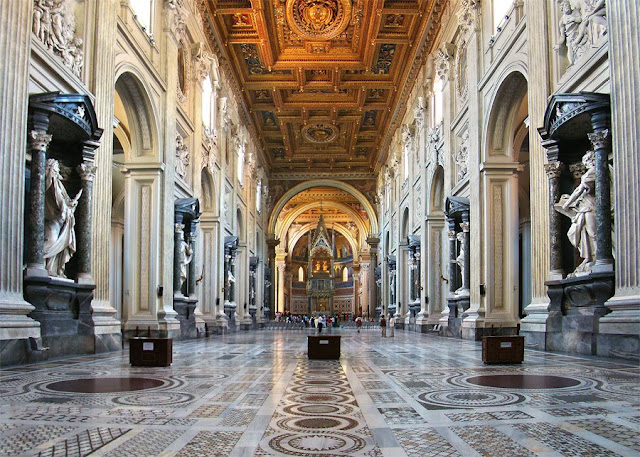
Anthony Blunt tells us (in the wonderful Borromini book he published back in 1979 – and still in print from Harvard University Press) that the baroque architect's most difficult commission of the 1640s was to restore the Basilica of St. John Lateran. "It had been a scandal for many years that this, the first church of Rome and one of the most venerated shrines of Christendom, had been allowed to fall into such a state of decay that it was in danger of collapsing. The walls of the nave were two feet out of the true at the top, and the columns of the nave arcade were too weak to carry the walls above them and had been encased in brick to make them stronger, thus destroying the character of the medieval basilica with its long row of re-used ancient columns."
In Giovanni Paolo Pannini's 18th-century painting above, the side walls are Borromini's. He concealed the necessary reinforcements between series of tall arches and projecting niches for sculpture, with stone-framed clerestory windows above. According to Blunt, Borromini would also have dearly loved to tear down the very old, flat, carved-and-painted wooden ceiling and replace it with a good modern barrel vault – including a dome at the altar-end – but the pope of the day overruled him.


The relatively short green marble columns that flank the statues are the re-used ancient Roman ones for which Borromini devised new non-weight-bearing locations that still kept them prominent. In a typical baroque move, he set them off at diagonals to the dominant plane behind them.

Borromini never saw the completed effect, since the statues were not put in place until long after his death and are, in their rococo delicacy, as little in sympathy with his sturdy baroque frame as that frame is out of keeping with the medieval altar and ceiling.

Yet for myself I cannot wait to experience this weird and lovely clash of styles while carrying the observant Mabel Watson Payne up and down the full length of this glorious space.